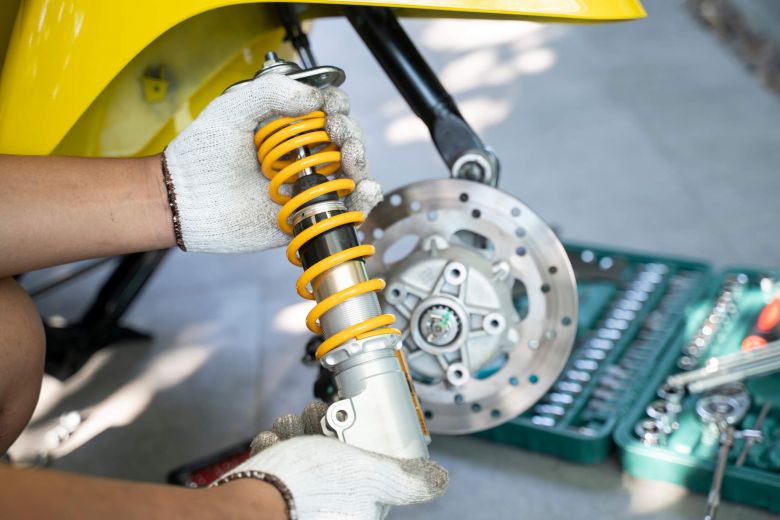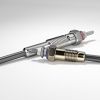Suspension is integral to all vehicles, for both safety and comfort, and keeping it in perfect working order is something all drivers should be doing.
This guide looks at what a coil spring is, what to do if they are no longer working, and whether you’re able drive your car with a broken coil spring.
What is the coil spring in a car?
A coil spring is a mechanical component that is used within the suspension to support the weight of the vehicle and absorb the impact from irregularities on the road.
The three main functions of a coil spring is the maintain stability and ride height, improve handling, and absorb impacts from the road – including potholes, speed bumps, and uneven surfaces.s
Coil springs lead to a smoother ride, making it easer for drivers to be safer when behind the wheel. It also protects important parts of the engine from being violently shaken when the vehicle is moving.
Maintaining road height also allows a driver to have perfect handling and awareness of ground clearance.
These springs also help protect and extend the life of tyres. By keeping all four tyres connected to the road, and minimising the impact of potholes and damaged roads, it keeps them in better condition over time.
Although there are two types of springs, they are mostly made from high-strength steel (or a composite material of the same strength), with a coiled rod, wrapped in a special type of plastic that is used to create the spring.
Types of coil springs in a car
The two types of coil springs found in most cars are either linear or progressive.
Linear coil springs, have a constant spring rate, meaning they compress consistently under load.
They provide predictable handling characteristics, making them common in many standard vehicle applications.
Progressive coil springs have a variable spring rate, which means that they become stiffer as they compress under pressure.
They offer a combination of a smoother ride over smaller bumps and potholes, as well as increased support during more significant impacts. This is why they appear in more high-performance vehicles.
Where are the coil springs in a car?
There are four coil springs in a car, once for each part of the suspension for a wheel – two in the front and two at the rear.
It should be noted that, for coil springs in the front suspensions, they are often used in conjunction with struts or shock absorbers that aid in keeping the vehicle safe.
In rear suspensions, this is often different, as they might work with separate shock absorbers or be part of a coil-over shock set-up.
This is an important distinction as they can be different sizes and offer more/less support depending on if they are at the front or rear of the vehicle.
What causes a coil spring to break?
The main cause for a coil spring in a car to break involves general wear and tear – often caused by poor maintenance.
Over time, coil springs can wear out due to thousands of miles of driving, leading to sagging, reduced ride height, and poor handling. This leads to safety problems for the driver and other road users.
They can also break due to corrosion, due to where the vehicle is kept when not in use or driving in wet conditions over an extended period of time.
These issues will mean you will need to replace your coil springs. However, this is something that should be done by a mechanic or at your trusted local garage.
Broken coil spring symptoms
Coil springs are an integral part of the car’s suspension, and there are a few common signs that they may be damaged or broken.
If the coil springs are not in full working order, then it will seriously impact the vehicle’s performance and safety.
Here are common symptoms indicating that coil springs might be damaged or broken:
- Uneven ride height: The car will be higher on one side or lower in one of the four corners.
- Loud suspension: This is usually a clunking, squeaking or creaking sound after the car travels over a bump or imperfection on the road.
- Poor or inconsistent handling: The vehicle will feel unstable when turning or travelling over an uneven surface.
- Excessive tyre wear: If you notice that one or more of your tyres are wearing out quickly, then this is a sign of an issue with the suspension system (including the coil spring).
- Car bottoming out: This is when the car hits the ground after going over a bump, and happens when the spring is no longer effective.
- Leaning when turning: If your vehicle is leaning unnaturally when you turn, then it is likely that the coil has worn out and needs replacing.
- Cracks, rust, and physical damage: In some situations, due to impact or another part of the vehicle being damaged, there may be a reason why the spring cracks. A common issue is rust over time, which impacts the structural integrity of the coil.
Can you drive with a broken coil spring?
No, you cannot drive your vehicle if the boil spring is broken.
It is illegal to drive a vehicle that isn’t safe and road legal – and having little or no control over a vehicle when it turns or drives over uneven surfaces can lead to dangerous situations.
Drivers caught driving with a damaged or broken coil spring could face a fine.
A broken coil spring compromises the suspension system, leading to decreased handling and stability. The vehicle may lean excessively during turns, increasing the risk of losing control.
Other problems include increased stopping distances, further damage to integral car components, excessive tyre damage, and a risk of losing parts of the underbody of the vehicle.
Call your local garage or mechanic and get the issue sorted as soon as possible.
How long does a car suspension last?
Although this can vary on make, model, age, and quality of the suspension itself – most systems last up to 100,000 miles.
This can be the lifetime of the car or just a few years. The real limit for a car’s suspension will be impacted by driving style and whether the system gets regular maintenance.
The suspension will be checked as part of the annual MOT.
Broken coil spring replacement cost
If you are looking to get a new coil spring for your vehicle, then you can expect to pay around £218, according to whocanfixmycar.
However, this can increase drastically increase due to make and model of the vehicle – as well as the quality of the new coil spring.
Interetingly, the data shows that the average cost for a rear coil replacement is around £212, and a front coil spring replacement will likely cost £288.
Source: whocanfixmycar, May 2025
| Manufacturer | Average cost for a replacement coil spring |
|---|---|
| Audi | £316 |
| BMW | £361 |
| Citroen | £308 |
| Fiat | £235 |
| Ford | £229 |
| Hyundai | £256 |
| MINI | £343 |
| Mercedes | £356 |
| Nissan | £318 |
| Peugeot | £303 |
| SEAT | £228 |
| Vauxhall | £218 |
| Volkswagen | £288 |
| Volvo | £300 |
Get a car service at home
RAC Mobile Mechanics can come to you, saving you the hassle of going to a garage.


Broken Coil Spring FAQs
What does a broken coil spring sound like?
If your car has a broken coil spring, you'll likely hear clunking, squeaking, or creaking noises when driving over bumps or uneven ground. This misalignment alters your car's suspension angles, causing components to scrape or knock against each other.
How to tell if your coil spring is broken?
You’ll be able to tell your coil spring is broken by:
- Uneven ride height
- Loud suspension, such as clunking or squeaking
- Poor handling
- Excessive tyre wear
What does a broken coil spring look like?
A broken coil spring may look like the following:
- Fractured ends where the spring has broken or cracked
- An uneven or distorted shape instead of the usual spiral
- Rust or corrosion around the area of the break









